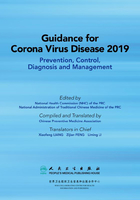
4 Diagnostic Criteria
4.1 Suspected Cases
The suspected cases should be diagnosed through considering both the epidemiological histories and clinical manifestations:
4.1.1 Epidemiology
(1)Having a history of travel or residence in Wuhan and its surrounding areas or other communities with cases reported within 14 days before the patient’s onset; or
(2)Having a contact history with patients(a positive results of nucleic acid test of 2019-nCoV)within 14 days before the patient’s onset; or
(3)Having a contact history with patients with fever or respiratory symptoms from Wuhan and its surrounding areas, or the communities with cases reported within 14 days before the patient’s onset; or
(4)Clustering occurrence of cases.
4.1.2 Clinical Manifestations
(1)Fever and/or respiratory symptoms;
(2)Having the imaging features of pneumonia described above;
(3)In the early stage, a normal or decreased total white blood cell count and a decreased lymphocyte count can be found.
Patients who satisfy any one of the epidemiological exposure histories as well as any two of the clinical manifestations can be diagnosed as suspected cases. Patients with no definite epidemiological history can be diagnosed only if all the three clinical manifestations are met.
4.2 Confirmed Cases
The suspected cases with one of the following etiological evidences can be diagnosed as confirmed cases:
4.2.1 A positive result of the nucleic acid of 2019-nCoV by real-time fluorescence RT-PCR;
4.2.2 The virus gene sequence is highly homologous to the known 2019-nCoV.